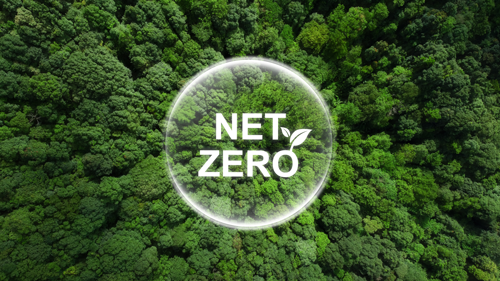Australia's national emissions targets revisited
A coordinated response to climate change
Climate change poses an immense global challenge, characterised by rising temperatures, extreme weather events, sea-level rise, and agricultural disruptions, all of which threaten food security, livelihoods, and biodiversity.
Addressing this crisis requires a coordinated international response, with the Conference of the Parties (COP) under the United Nations Framework Convention on Climate Change (UNFCCC) serving as the supreme decision-making body for climate action.
COP meetings bring nations together to negotiate and agree upon strategies for mitigating greenhouse gas emissions, adapting to climate change impacts, and mobilising financial resources. This global cooperation aims to navigate the complex climate landscape and seek solutions that safeguard the planet while promoting sustainable development.
As we approach the 2023 UN Climate Change Conference (UNFCCC COP28), this article provides an updated assessment of Australia and New Zealand’s efforts in mitigating climate change from a national level. You can find our 2021 assessment here.
For an updated assessment from an Australian jurisdictional level, please see our article Australia’s Jurisdictional Emission Targets Revisited.

What is Australia doing?
Passing an Act of commitment and accountability
Australia solidified its commitment to climate action by passing the Climate Change Act 2022. This legislation mandates a reduction of greenhouse gas emissions by 43% below 2005 levels by 2030, with a goal of achieving net zero emissions by 2050. The Act also establishes a framework for accountability via annual climate change statements to be provided in Parliament and advisory roles for the Climate Change Authority, thereby ensuring a structured approach towards meeting these targets.
Additionally, the legislation incorporated the emissions reduction targets and the Paris Agreement into the objectives and functions of various agencies and government departments.

Implementing strategies to reach the emission reduction goal
Australia is a party to the United Nations Framework Convention on Climate Change (UNFCCC), and the Paris Agreement, committing to reducing greenhouse gas emissions, tracking progress towards those commitments, and annually reporting on Australia’s greenhouse gas emissions.
To achieve the emissions reduction goal, and adhere to the requirements of the UNFCCC and the Paris Agreement, Australia has developed many strategies, including:
- The development of a Net Zero 2050 plan and 2035 emission reduction targets
- Emissions reduction incentives, such as the Emissions Reduction Fund, Climate Active and the Renewable Energy Target scheme
- Monitoring and accountability through the National Greenhouse and Energy Reporting (NGER) scheme and Safeguard Mechanism
- Annual reports of emissions, via Australia’s National Greenhouse Accounts website
- Various adaptation strategies to increase Australia’s capacity to adapt to the climate crisis.
Additional emissions reduction strategies that Australia has implemented include carbon capture, use, and storage, regulation of Australian fuel quality, the development of a First Nations Clean Energy and Emissions Reduction Advisory Committee, and reviews of Australian carbon credit units and Australia’s carbon leakage.
See Australia’s emission estimates by state and territory.

What about New Zealand?
Amending law to reduce greenhouse gas emissions and biogenic methane emissions
New Zealand’s emissions reduction target of reaching net zero by 2050 was legislated in November 2019 with the commencement of the Climate Change Response (Zero Carbon) Amendment Act, which amended the Climate Change Response Act 2002.
These amendments established domestic targets into law including:
- Reducing net emissions of all greenhouse gasses other than biogenic methane to zero by 2050
- Reducing the emissions of biogenic methane by 24% to 47% below 2017 levels by 2050, including a 10% reduction below 2017 biogenic methane emissions by 2030.
Under the Act, there are several regulations and orders that cover a wide range of technical regulations, including general exemptions, fishing allocation plans, eligible industrial activities, removal activities, stationary energy and industrial processes, synthetic greenhouse gas levies, unique emissions factors, unit register, waste, forestry, and fossil fuels.

Planning for a cleaner future for all resource sectors
New Zealand is also taking several other actions to achieve net zero emissions, through:
- The establishment of a Climate Change Commission to provide advice to Government on climate change mitigation and adaptation. The commission also monitors progress towards the new 2050 target emissions budgets and the implementation of a National Adaptation Plan
- An Emissions Reduction Plan that outlines how New Zealand will meet emissions budgets and make progress toward the 2050 target
- The NZ Emissions Trading Scheme, which is a key tool to meet international obligations under the Paris Agreement, legislated emission reduction targets and emissions budgets.
- The introduction of an emissions pricing mechanism for the agriculture sector from 2025
- Offsetting emissions through forestry
- The introduction of the Climate Adaptation Act, which is part of a set of three new laws reforming the Resource Management System.
See how New Zealand is tracking with emissions reductions.

Snapshot of Australia and New Zealand’s emission reduction and renewable energy targets
| Country | Achieve net zero | Reduction targets | Renewable energy targets | More information |
| Australia | 2050 | 43% reduction by 2030 (based on 2005 levels) | 82% by 2030 | Emissions Reduction in Australia |
| New Zealand | 2050 (other than biogenic methane) | 50% reduction by 2030 (based on 2005 levels)
In relation to biogenic methane emissions: 10% reduction by 2030, 24-47% reduction by 2050 (based on 2017 biogenic methane emissions) |
50% by 2035 100% by 2030 (aspirational) |
NZ Greenhouse Gas Emissions Targets and Reporting |
Download a PDF version of this snapshot here.

Summary
As the 2023 UN Climate Change Conference (UNFCCC COP28) approaches, Australia and New Zealand have taken notable steps to mitigate climate change. Both countries have committed to ambitious emissions reduction targets, invested in renewable energy, and prioritised climate adaptation.
These efforts demonstrate a growing recognition of the urgent need for global action to combat climate change. While challenges remain, the international community looks to COP28 as an opportunity for further collaboration and progress towards a sustainable future.
References
Australia
- Australian Trade and Investment Commission Webpage: Transition to Net Zero
- Climate Change (Consequential Amendments) Bill 2022 – Explanatory Memorandum
- Department of Climate Change, Energy, the Environment and Water Webpage: Net Zero
- Department of Climate Change, Energy, the Environment and Water Webpage: Tracking and Reporting Greenhouse Gas Emissions
- Department of Climate Change, Energy, the Environment and Water Webpage: Emissions Reduction Fund
- Department of Climate Change, Energy, the Environment and Water Webpage: Climate Active
- Department of Climate Change, Energy, the Environment and Water Webpage: Renewable Energy Target Scheme
- Department of Climate Change, Energy, the Environment and Water Webpage: National Greenhouse and Energy Reporting Scheme
- Department of Climate Change, Energy, the Environment and Water Webpage: Safeguard Mechanism
- Department of Climate Change, Energy, the Environment and Water Webpage: Australia’s National Greenhouse Accounts
- Department of Climate Change, Energy, the Environment and Water Webpage: Carbon Capture, Use and Storage
- Department of Climate Change, Energy, the Environment and Water Webpage: Regulating Australian Fuel Quality
- Department of Climate Change, Energy, the Environment and Water Webpage: First Nations Clean Energy and Emissions Reduction Advisory Committee
- Department of Climate Change, Energy, the Environment and Water Webpage: State and Territory Greenhouse Gas Inventories – Annual Emissions
New Zealand
- Climate Change Commission Website
- Climate Change Response Act 2002
- Ministry for the Environment Publication: Aotearoa New Zealand’s First Emissions Reduction Plan
- Ministry for the Environment Publication: Aotearoa New Zealand’s First Emissions Reduction Plan – Chapter 13 Agriculture
- Ministry for the Environment Publication: Aotearoa New Zealand’s First Emissions Reduction Plan – Chapter 14 Forestry
- Ministry for the Environment Publication: New Zealand’s Greenhouse Gas Inventory 1990–2021
- Ministry for the Environment Webpage: Climate Change Response (Zero Carbon) Amendment Act 2019
- Ministry for the Environment Webpage: Government Climate-Change Work Programme – Climate Change Response (Zero Carbon) Amendment Act and independent Climate Change Commission
- Ministry for the Environment Webpage: Greenhouse Gas Emissions Targets and Reporting – Reporting on Progress Towards our Domestic Targets
- Ministry for the Environment Webpage: National Adaptation Plan
- Ministry for the Environment Webpage: New Zealand Emissions Trading Scheme
- Ministry for the Environment Webpage: Resource Management System Reform
- Ministry of Business, Innovation & Employment Webpage: New Zealand Energy Strategy